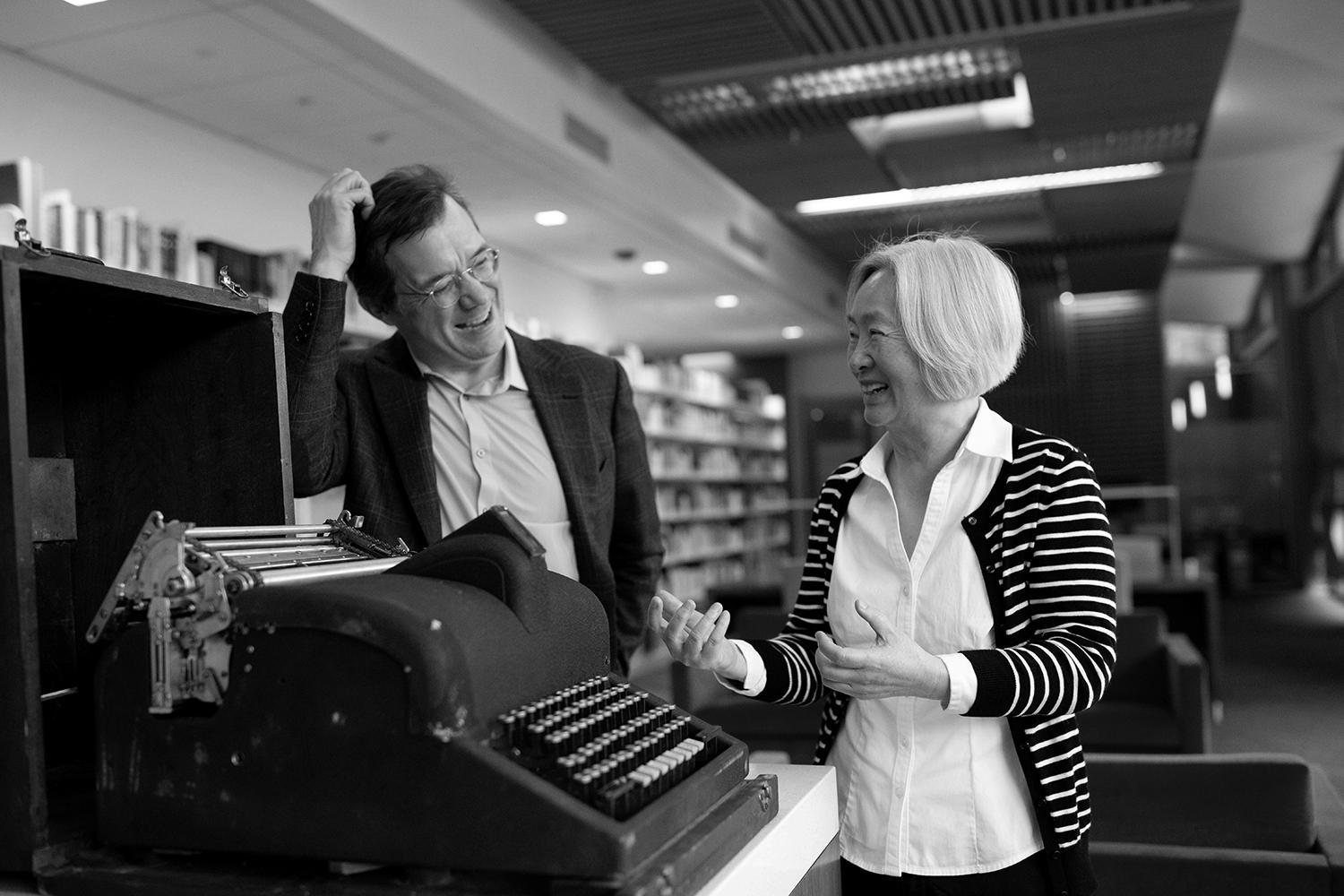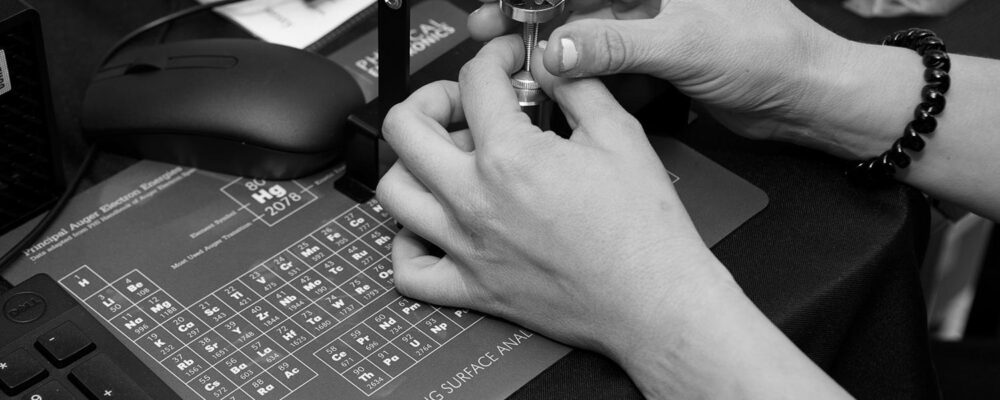Stanford University Libraries has acquired the only known prototype of the MingKwai Chinese typewriter (明快打字機), the first Chinese typewriter to possess a keyboard.
‘It weighs a ton!’
Earlier this year, the Facebook messages and Reddit threads began circulating among antiquarians. While cleaning out her late grandfather’s basement in New York state, Jennifer Felix and her husband discovered an odd object that looked like a 40s-era typewriter with Chinese characters on the keys. Hoping to identify it, they turned to social media.
“From my internet search, it looks to be a Chinese-made MingKwai. I just can’t find any ever sold here in the states. Is it even worth anything? It weighs a ton!” Felix’s husband posted. Hundreds of typewriter experts, scholars, museum curators, and collectors responded from around the world, many offering to purchase the machine. “We knew then that this was a big deal,” Felix said.
One of the commenters pointed them to a book by Stanford scholar Thomas Mullaney, The Chinese Typewriter: A History, which has a chapter dedicated to the MingKwai. After corresponding with Mullaney, who has published extensively on modern Chinese history and technology, Felix ultimately decided that the MingKwai belonged at Stanford. “I didn’t want this unique, one-of-a-kind piece of history to disappear again,” she said.
The MingKwai (“clear and fast”) was invented by the Chinese-born author, translator, and cultural commentator Lin Yutang in the 1940s. The 72-key machine was not a typewriter in the conventional sense, Mullaney wrote in The Chinese Typewriter, but rather an ingenious device designed to retrieve Chinese characters in a way that hadn’t been done before.
“The depression of keys did not result in the inscription of corresponding symbols, according to the classic what-you-type-is-what-you-get convention, but instead served as steps in the process of finding one’s desired Chinese characters from within the machine’s mechanical hard drive, and then inscribing them on the page.”
Depressing a key from one of the top three rows triggered a rotation of the machine’s internal workings; depressing one from the middle rows triggered a second rotation, bringing eight characters into view in a small window Lin called the “magic eye.” The typist then chose among them by depressing one of the numbered keys on the bottom row.
“Lin invented a machine that altered the very act of mechanical inscription by transforming inscription into a process of searching,” Mullaney said. “The MingKwai Chinese typewriter combined ‘search’ and ‘writing’ for arguably the first time in history, anticipating a human-computer interaction now referred to as input, or shuru in Chinese.”
In 1947, the Carl E. Krum Company built what is believed to be the sole prototype of Lin’s invention. A year later, in debt and unable to generate interest in mass producing his machine, Lin sold the prototype and the commercial rights to the Mergenthaler Linotype Company, where Felix’s grandfather worked as a machinist. The company never manufactured the typewriter, and the prototype eventually disappeared, known to historians only through patent paperwork and related documents.
An extraordinary prototype made accessible for scholarship
At Stanford, the MingKwai will be used in research, exhibits, and academic programs.
“The MingKwai innovatively overcame the challenge of fitting the 80,000-plus characters of the Chinese language into a reasonably sized machine. Three keystrokes and the use of a special viewfinder – Lin’s “magic eye” – make a single impression on paper not corresponding to the symbols on the keyboard,” said Regan Murphy-Kao, director of the East Asia Library. “I couldn’t be happier to have the opportunity to steward, preserve, and make this extraordinary prototype accessible for scholarship.”
Support from the Bin Lin and Daisy Liu Family Foundation enabled Stanford University Libraries to acquire the MingKwai. The gift also includes a fund to provide for the machine’s care and maintenance.
“The Stanford University Libraries are most fortunate to receive this momentous discovery through the thoughtfulness of Jennifer Felix and the Bin Lin and Daisy Liu Family Foundation,” said Michael A. Keller, the Ida M. Green University Librarian. “The MingKwai and its complex, first-ever Chinese keyboard will fascinate students and scholars.”
For more information
Thomas Mullaney is professor of history and, by courtesy, of East Asian languages and cultures in the School of Humanities and Sciences. He is the director and co-PI of SILICON, the Stanford Initiative on Language Inclusion and Conservation in Old and New Media.
“Stanford University, officially Leland Stanford Junior University, is a private research university in Stanford, California. The campus occupies 8,180 acres, among the largest in the United States, and enrols over 17,000 students.”
Please visit the firm link to site






